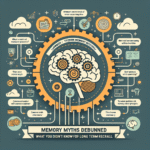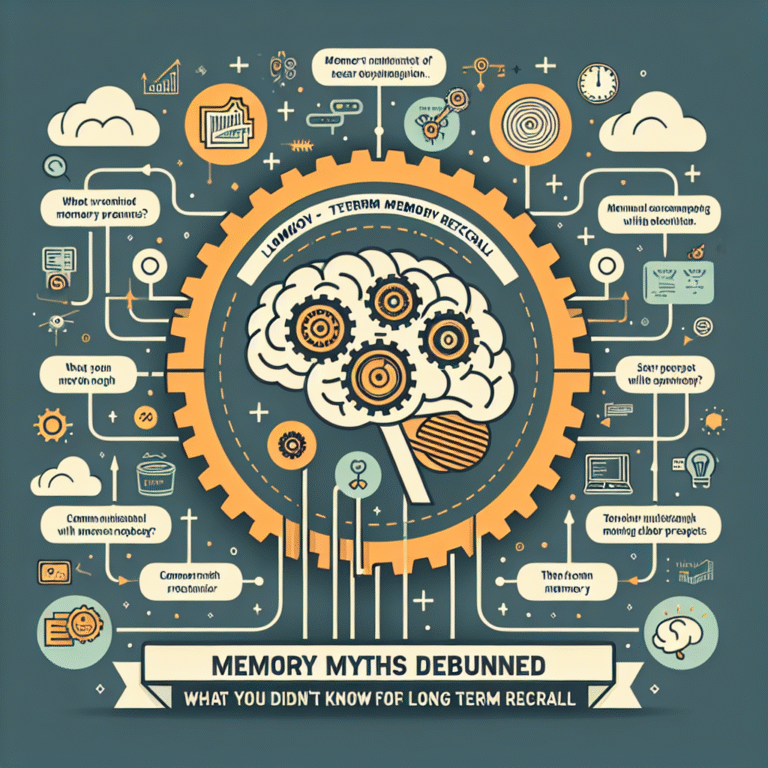
In our fast-paced, hyper-connected world, the relentless onslaught of information can feel overwhelming. Each day, we’re bombarded with notifications, updates, emails, and articles that compete for our attention. Navigating the Information Overload: The Role of Selective Attention has never been more crucial. This article dives deep into how we can harness selective attention as a powerful tool to manage the flood of information effectively, enhancing both our productivity and well-being.
Introduction: The Age of Information Overload
Imagine standing in the middle of a bustling marketplace, where each vendor is shouting their offerings at the top of their lungs. This chaotic scene mirrors our daily experience online, where the sheer volume of information can feel suffocating. Navigating the Information Overload: The Role of Selective Attention becomes paramount as we seek clarity, focus, and wellness amid this chaos.
Research indicates that our brains can only process a limited amount of information at a time, making our ability to filter the noise essential. In this article, we will explore the mechanisms of attention, strategies to enhance selective attention, and practical applications highlighting its significance in everyday life.
Understanding Selective Attention: The Science Behind the Filter
What is Selective Attention?
Selective attention is the cognitive process of focusing on relevant stimuli while ignoring irrelevant distractions. This capability allows us to concentrate on what truly matters, whether that’s a conversation with a friend, a challenging work task, or a captivating book.
The Brain’s Filters of Attention
Our brains employ several mechanisms to navigate the vast amount of information:
- Feature-Based Selection: This involves focusing on specific attributes of stimuli, like color or shape, to differentiate them from others.
- Spatial Selection: This type of attention enables us to focus on particular areas in our environment, filtering out unnecessary information.
- Task-Based Selection: This functionality allows us to concentrate on tasks, tuning out distractions that are not relevant to our objectives.
Understanding these filters is the first step in learning how to harness selective attention amid information overload.
The Impact of Information Overload
The Psychological Toll
The psychological implications of constant distractions and information overload are serious. Research shows that prolonged exposure to excessive information can lead to anxiety, decreased productivity, and even burnout.
- Case Study: In a study conducted by the University of California, it was found that employees exposed to high levels of information struggled to focus, resulting in significant productivity declines.
The Cognitive Costs
Our cognitive capacity has limits. When we try to consume too much information at once, we risk cognitive overload, which can impair decision-making skills, critical thinking, and creativity.
| Type of Overload | Impact |
|---|---|
| Cognitive | Difficulty in processing information |
| Emotional | Increased anxiety and stress |
| Physical | Fatigue and burnout |
Using selective attention effectively helps mitigate these costs, allowing us to function optimally.
Strategies for Enhancing Selective Attention
Prioritize Tasks with the Eisenhower Matrix
Using the Eisenhower Matrix can be an effective strategy for prioritizing tasks based on urgency and importance. This method helps filter tasks that deserve attention from those that don’t, easing cognitive load.
Implement the Pomodoro Technique
The Pomodoro Technique involves working in focused bursts of 25 minutes, followed by short breaks. This method encourages sustained attention and prevents burnout.
Set Boundaries with Digital Detox
Taking a step back from constant digital engagement can significantly enhance selective attention. Designate specific times to check emails and social media, allowing uninterrupted momen ts for deep work.
Create a Controlled Environment
Structuring your environment can reduce distractions. Whether it’s turning off notifications or creating a designated workspace, minimizing external stimuli can enhance your ability to focus.
Real-World Applications of Selective Attention
Case Study: Google’s Information Management
Google employs sophisticated algorithms to prioritize content relevance, ensuring users navigate vast information effectively. Their focus on user-centric design emphasizes selective attention by presenting the most relevant search results.
Case Study: Ford’s Approach to Employee Well-being
Ford implemented policies to manage workplace information flow, significantly improving employees’ focus and productivity. Encouraging breaks and minimizing multi-tasking allowed for greater selective attention and increased job satisfaction.
The Connection Between Mindfulness and Selective Attention
Mindfulness practices can elevate our ability to exercise selective attention. By training ourselves to be present and aware, we refine our filter of information.
Techniques for Mindfulness
- Meditation to cultivate focus.
- Deep-breathing exercises to reduce stress and anxiety.
- Journaling to organize thoughts and prioritize tasks.
Integrating mindfulness into daily routines provides a pathway to enhanced selective attention and overall mental well-being.
Conclusion: Mastering Your Focus in an Information-Heavy World
Navigating the Information Overload: The Role of Selective Attention goes beyond mere survival in the digital age; it enables us to thrive. By embracing strategies that enhance our focus, setting clear boundaries, and practicing mindfulness, we equip ourselves with the tools necessary to manage the tidal wave of information effectively.
As we move forward, remember: your ability to focus is your greatest asset in a world filled with distractions. Take charge of your attention today and watch your productivity and well-being flourish.
FAQs
1. What is information overload?
Information overload occurs when an individual is exposed to more information than they can process, leading to decreased understanding and decision-making capabilities.
2. How can I improve my selective attention?
You can improve selective attention by practicing prioritization techniques, implementing time-management strategies like the Pomodoro Technique, and minimizing distractions in your working environment.
3. Is multitasking effective for productivity?
Research suggests that multitasking often reduces productivity and focus, leading to cognitive overload. It’s generally more effective to focus on one task at a time.
4. Can mindfulness help with selective attention?
Yes, mindfulness practices have been shown to enhance selective attention by training your brain to focus on the present moment, thus filtering out distractions.
5. How does technology contribute to information overload?
Technology contributes to information overload through constant notifications, emails, and an abundance of available content, making it challenging for individuals to maintain focus.
By understanding the critical role selective attention plays and employing effective strategies to manage information overload, we can reclaim our productivity and improve our quality of life in an increasingly busy world.
















